IL-4 and IL-13: the key and central drivers of type 2 inflammation1-2,6-7
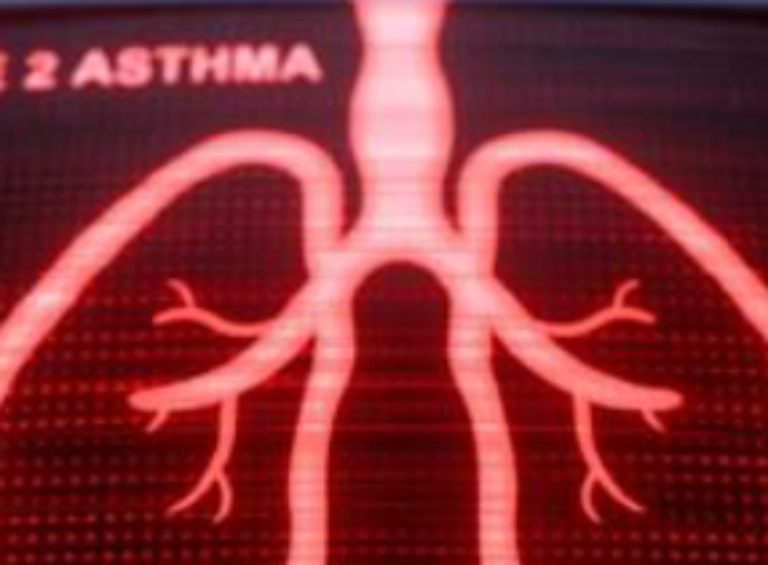
Type 2 inflammation is the underlying pathophysiological mechanism in most patients with asthma.3 Results from genetic and clinical studies, as well as pragmatic clinical trials support that presence of type 2 inflammation in asthma is a risk factor for future exacerbations.4
Type 2 inflammation: A multifaceted immune response5-10
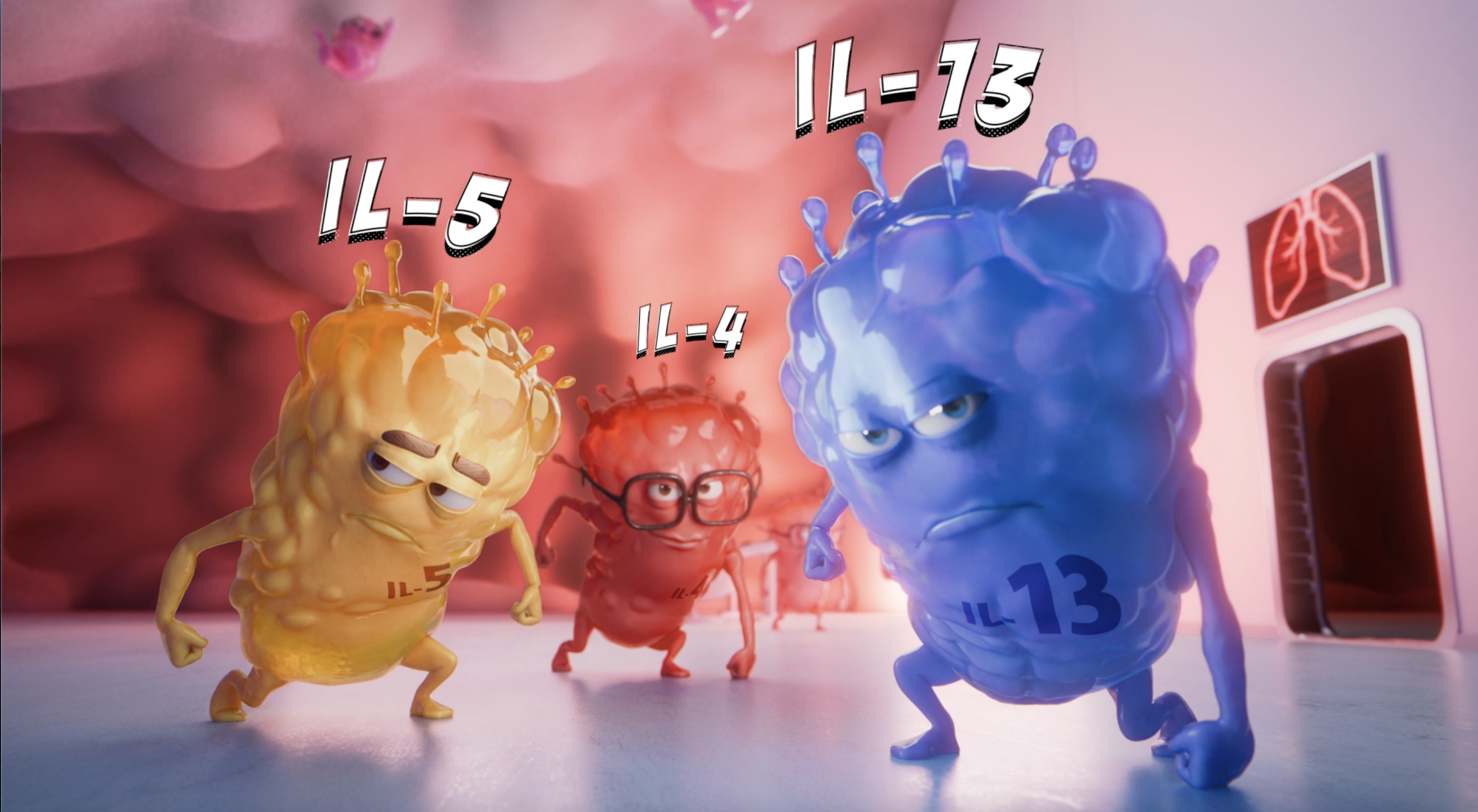
In type 2 inflammation, the presence of allergens in the airways triggers the production of cytokines like IL-4, IL-13, and IL-5.5
Aeroallergens penetrate the epithelial barrier, and can cause simultaneous emergency responses in the body, including: 6,7


Understanding the mechanism of type 2 inflammation and the role of key type 2 cytokines, is essential for targeted asthma management.8
Watch the video to see this story in action:
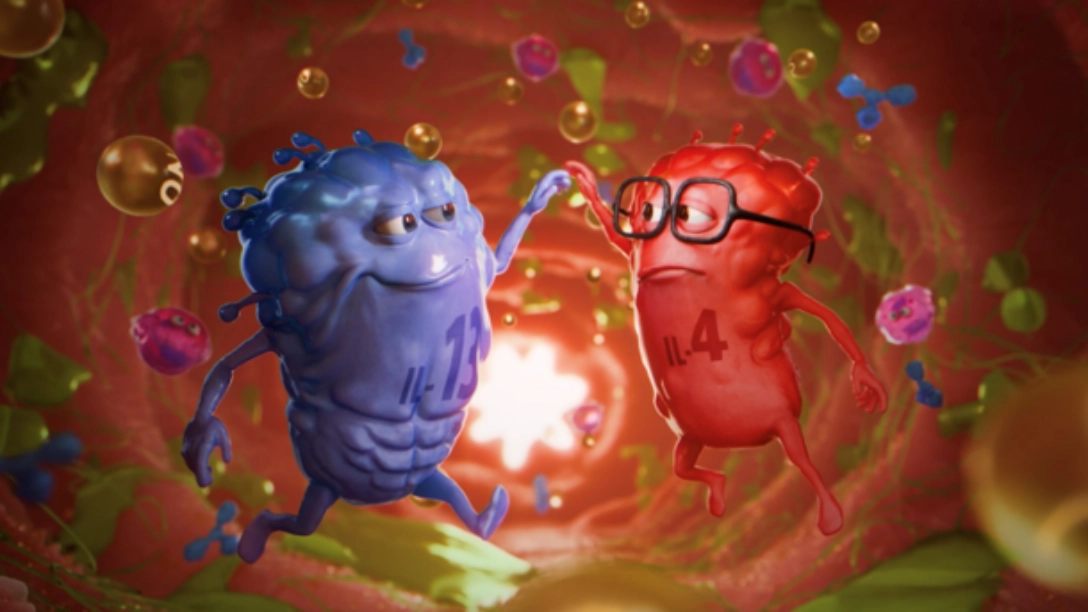
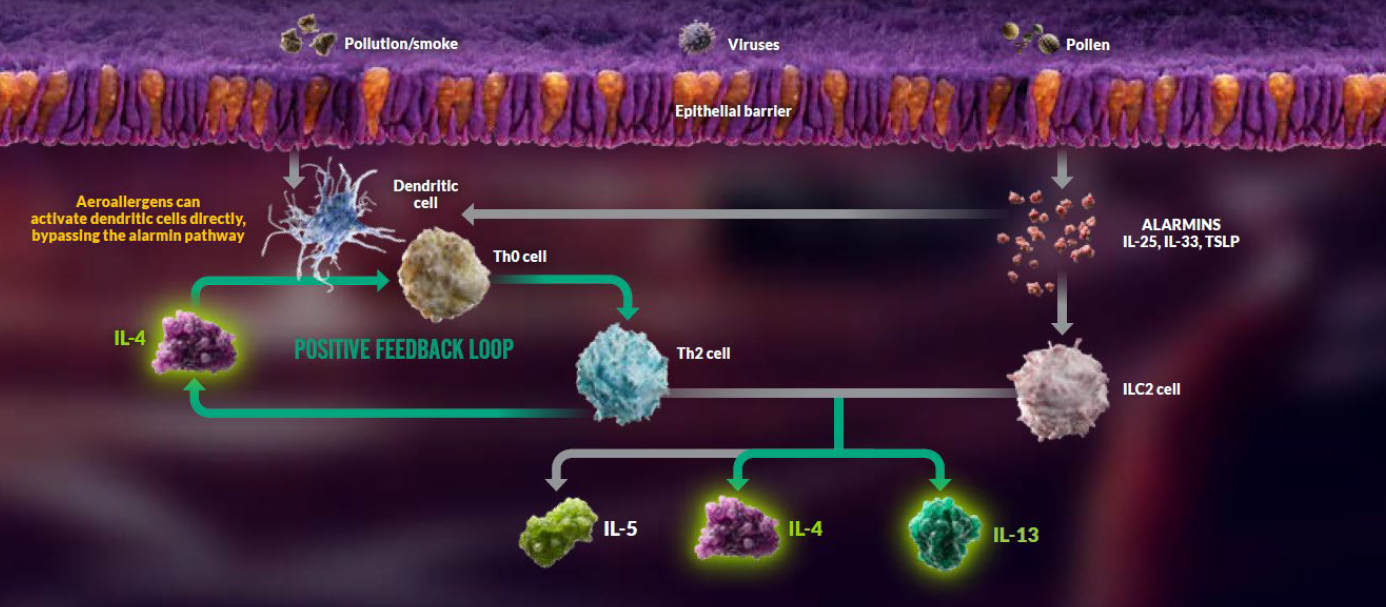
When allergens enter the airways, they directly activate dendritic cells to cells to differentiate Th0 cells into Th2 cell.6,7
Th2 cells produce large amounts of cytokines such as IL-4, IL-13 and IL-5.9,10
At the same time, lung airway epithelial cells release alarmins like TSLP, IL-25 and IL-33 which further stimulates Th2 cells and ILC2 cells, to produce more type 2 cytokines.10

How Type 2 cytokines take over1-2,6-7,12
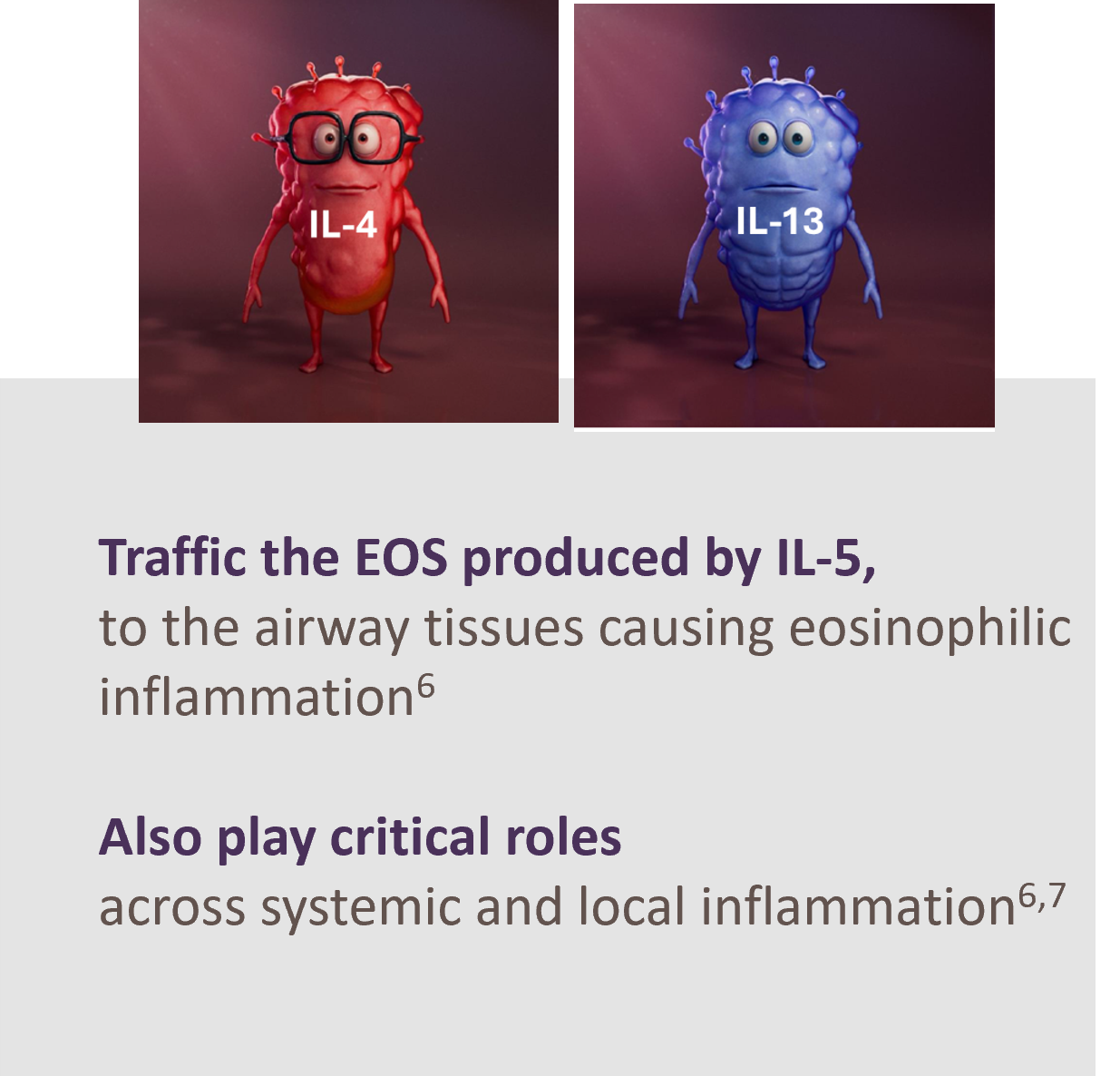
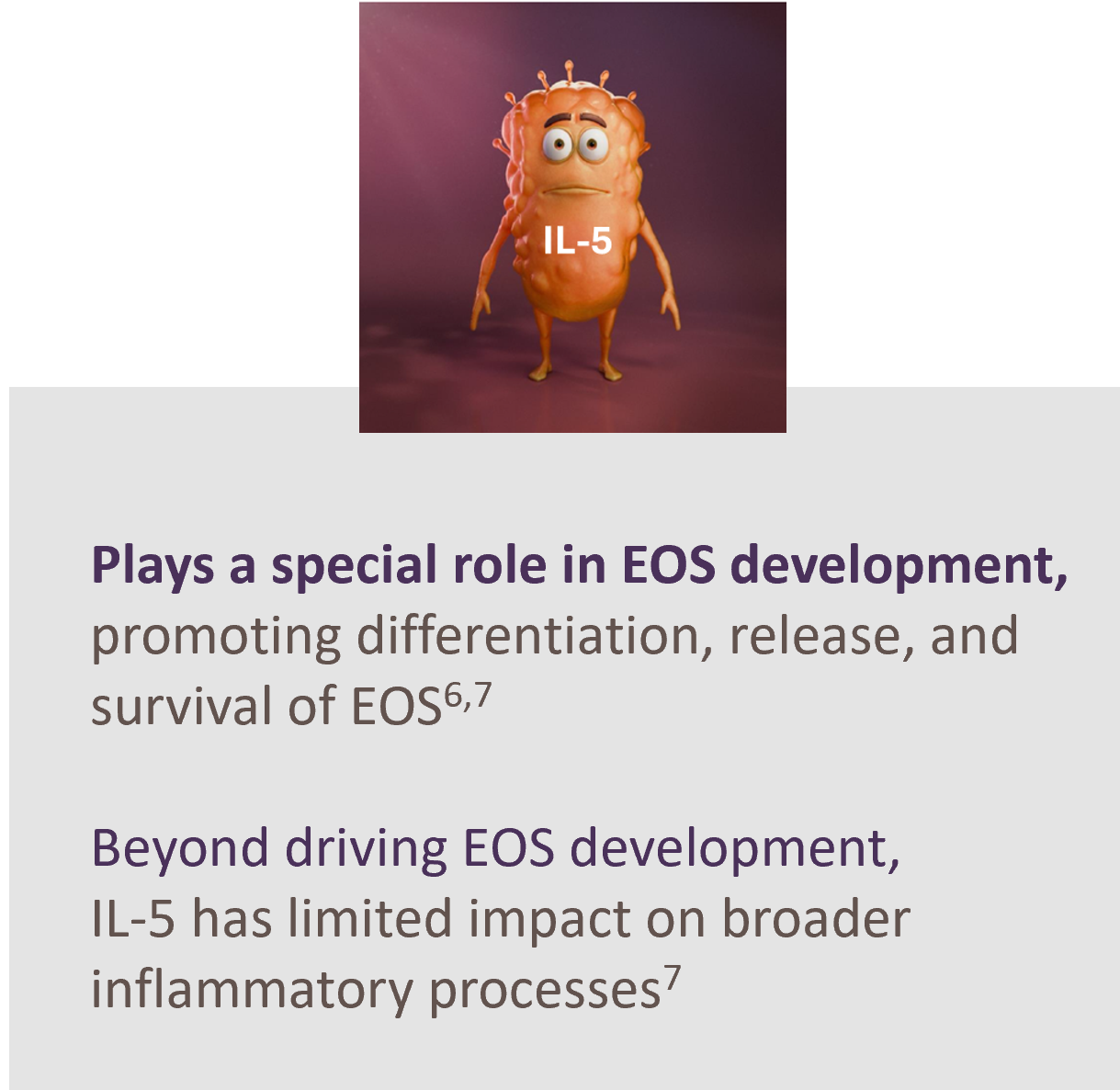

Both IL-4 and IL-13 are key cytokines that play crucial roles in initiating the inflammatory signaling cascade.1,2
IL-5 promotes differentiation of eosinophils in bone marrow and increases their presence in the airways.1
IL-4 and IL-13 appear as the most suitable targets to treat type 2 inflammation in asthma.12
Il-4 and IL-13: The key and central drivers of Type 2 inflammation6,7
Impact the burden of asthma by addressing both systemic and local manifestations of type 2 inflammation driven by IL-4 and IL-13.6,7
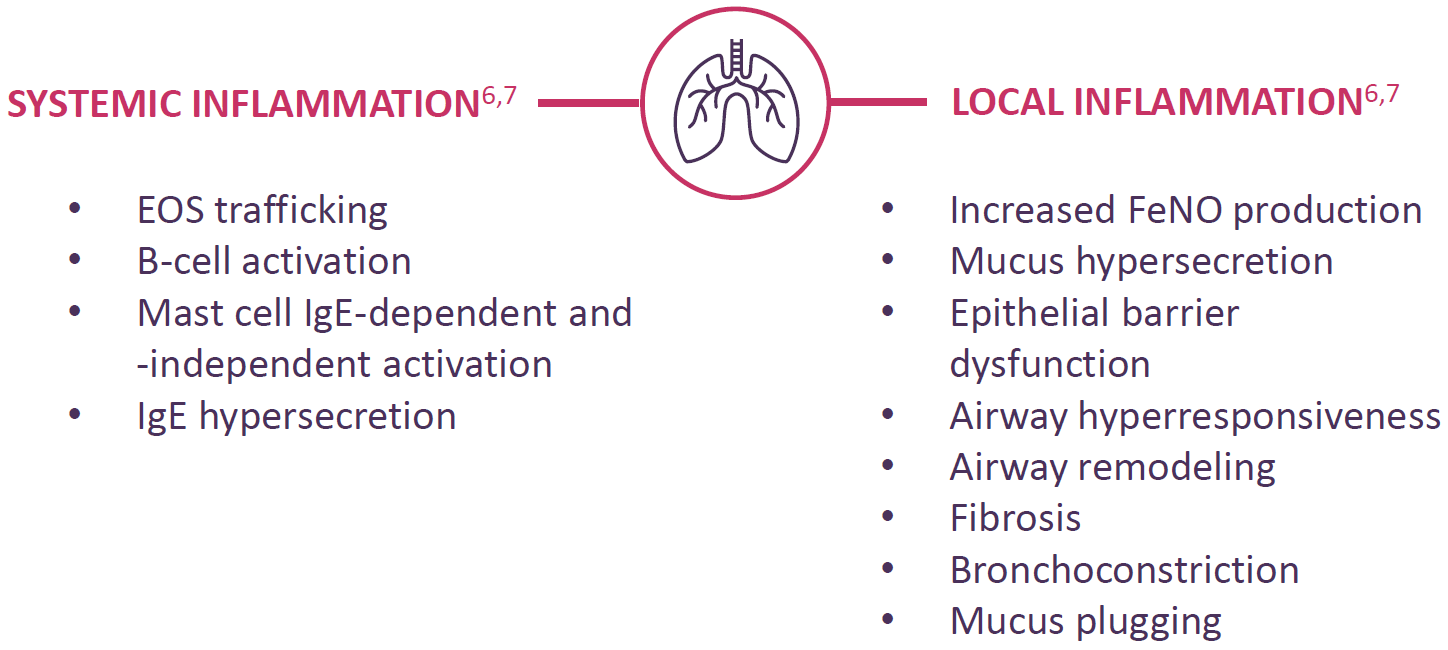
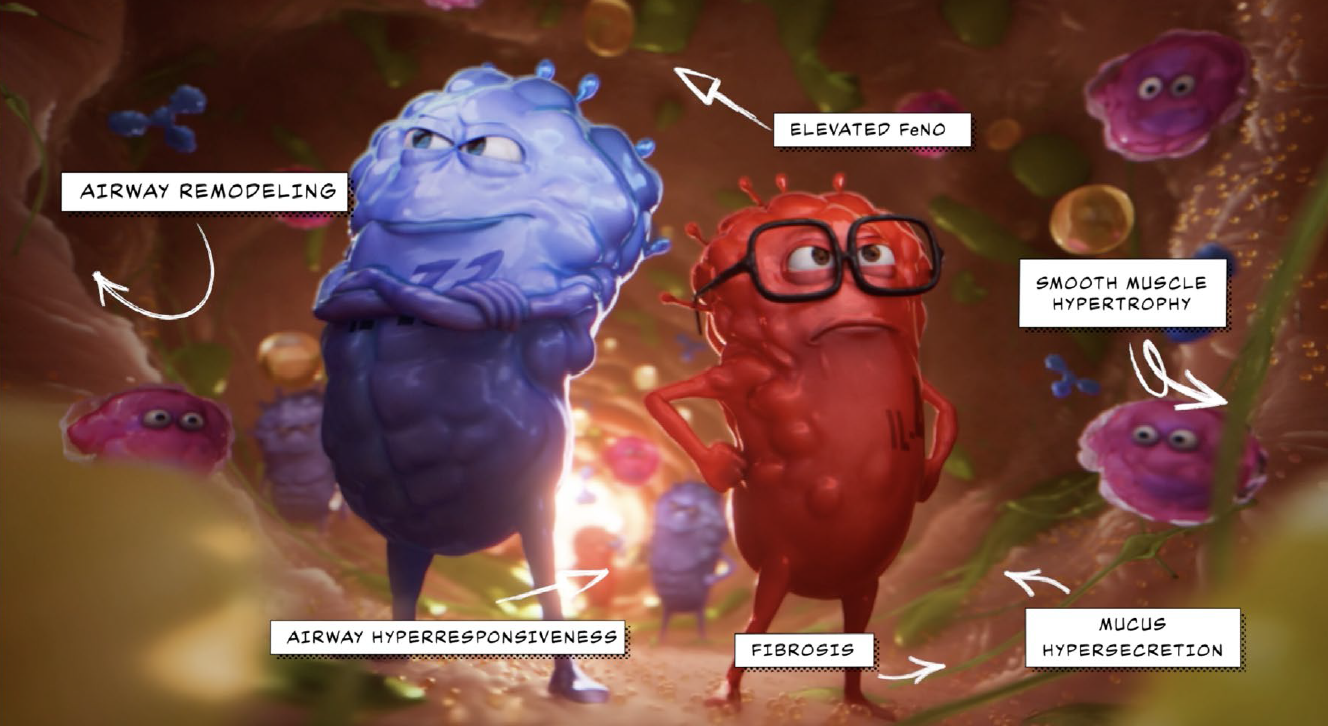
Start where the burden begins6,7
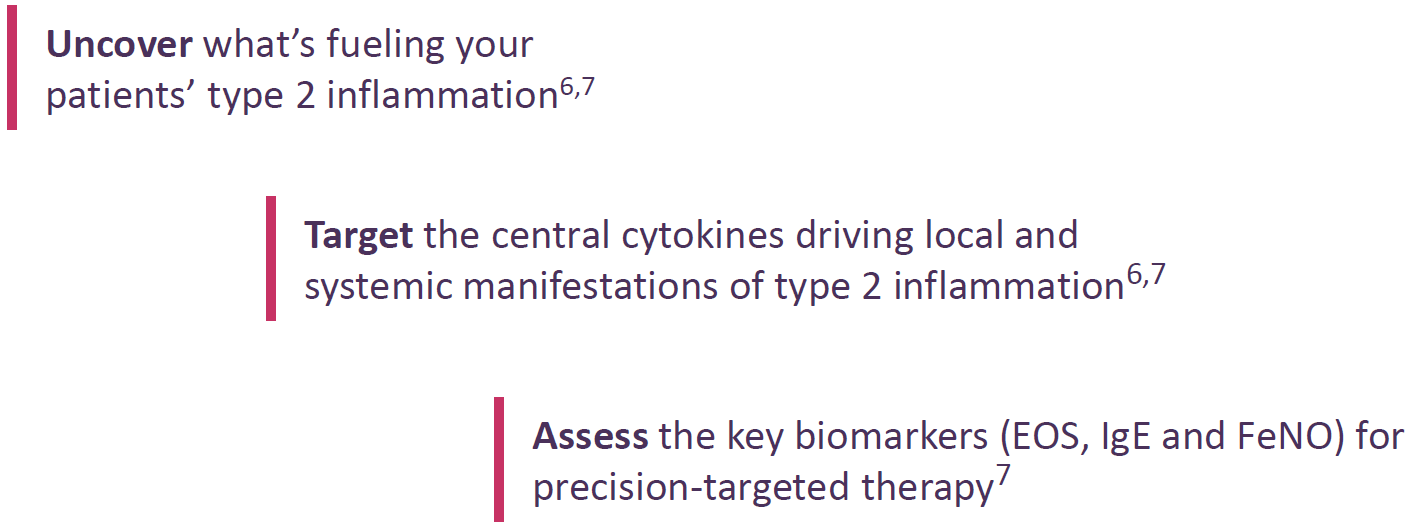

EOS, eosinophil; FeNO, fraction of exhaled nitric oxide—FeNO ≥20 ppb is considered one of the characteristics of T2 asthma by GINA; IgE, immunoglobulin E; IL, interleukin; ILC2, group 2 innate lymphoid cells; T2, type 2; Th0, naive T cell; Th2, T helper 2 cell; TSLP, thymic stromal lymphopoietin
-
Nakagome K and Nagata M. The Possible Roles of IL-4/IL-13 in the Development of Eosinophil-Predominant Severe Asthma. Biomolecules. 2024;14(5):546.
-
Pelaia C, Heffler E, Crimi C, et al. Interleukins 4 and 13 in Asthma: Key Pathophysiologic Cytokines and Druggable Molecular Targets. Front Pharmacol. 2022;13:851940.
-
León B, Ballesteros-Tato A. Modulating Th2 Cell Immunity for the Treatment of Asthma. Front Immunol. 2021;12:637948.
-
Dunican EM and Fahy JV. The Role of Type 2 Inflammation in the Pathogenesis of Asthma Exacerbations. Ann Am Thorac Soc. 2015;12 Suppl 2(Suppl 2):S144-S149.
-
Hammad H and Lambrecht BN. The basic immunology of asthma. Cell. 2021;184(6):1469-1485.
-
Gandhi NA, Bennett BL, Graham NMH, Pirozzi G, Stahl N, Yancopoulos GD. Targeting key proximal drivers of type 2 inflammation in disease. Nat Rev Drug Discov. 2016;15(1):35-50. doi:10.1038/nrd4624.
-
Robinson D, Humbert M, Buhl R, et al. Revisiting type 2-high and type 2-low airway inflammation in asthma: current knowledge and therapeutic implications. Clin Exp Allergy. 2017;47(2):161-175. doi:10.1111/cea.12880.
-
Maspero J, Adir Y, Al-Ahmad M, et al. Type 2 inflammation in asthma and other airway diseases. ERJ Open Res. 2022;8(3):00576-2021.
-
Hammad H and Lambrecht BN. The basic immunology of asthma. Cell. 2021;184(6):1469-1485.
-
Howell I, Howell A, Pavord ID. Type 2 inflammation and biological therapies in asthma: Targeted medicine taking flight. J Exp Med. 2023;220(7):e20221212.
-
Global Initiative for Asthma. Global strategy for asthma management and prevention, 2025. Accessed August 22, 2025. https://ginasthma.org/2025-gina-strategy-report/.
-
BagnascoD,FerrandoM,VarricchiG,PassalacquaG,CanonicaGW.ACriticalEvaluationofAnti-IL-13andAnti-IL-4StrategiesinSevereAsthma.IntArchAllergyImmunol.2016;170(2):122-131.
-
McGregorMC,KringsJG,NairP,CastroM.RoleofBiologicsinAsthma.AmJRespirCritCareMed.2019;199(4):433-445.
